The Xiaomi Mi Note Pro and Mi Note Review
by Joshua Ho on September 11, 2015 9:00 AM ESTSystem Performance Cont'd
Now that we've gone over some of the more CPU-bound benchmarks for overall performance, we can look at some of the more GPU-bound benchmarks such as 3DMark, Basemark X, and GFXBench 3. Of course, it's important to note that we're actively in the process of migrating to newer GPU benchmarks so for now these benchmarks are really mostly representative of OpenGL ES 3 performance rather than 3.1.
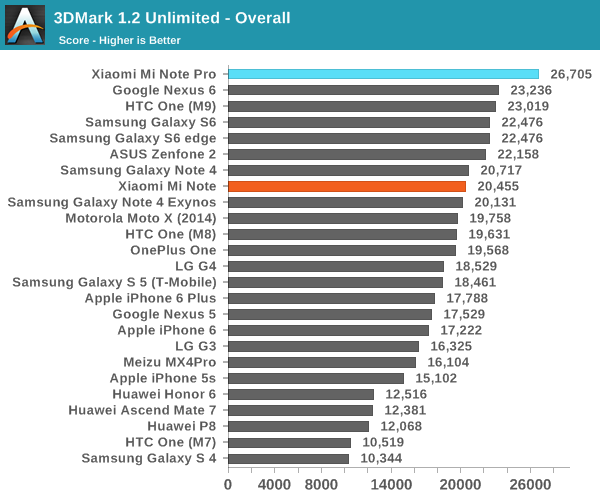
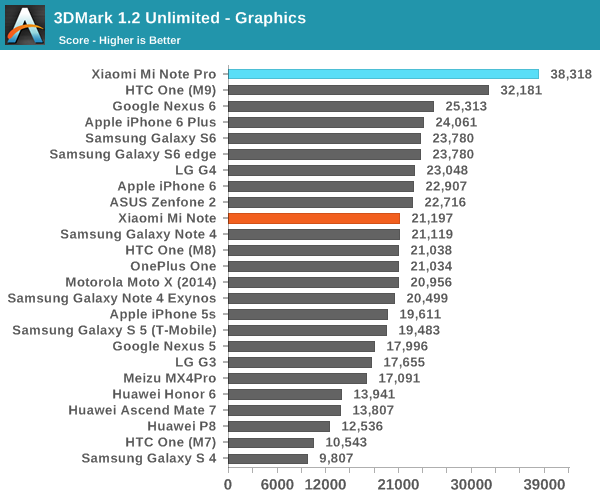
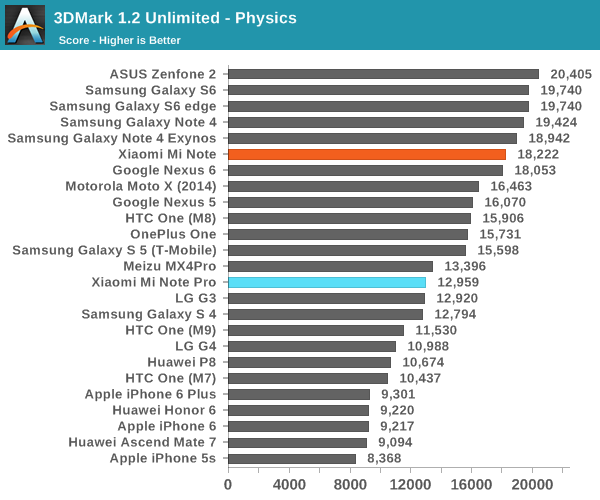

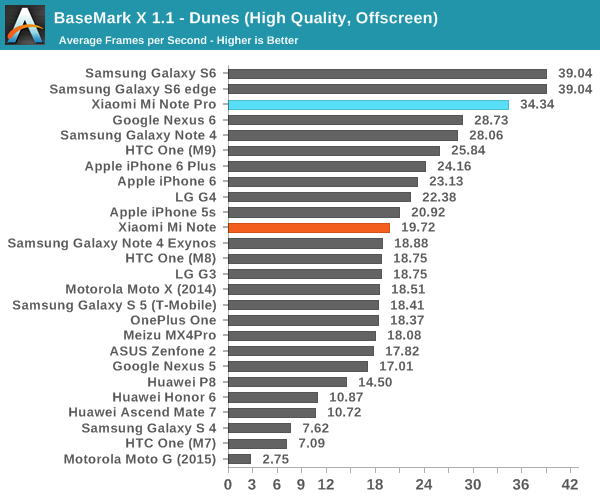

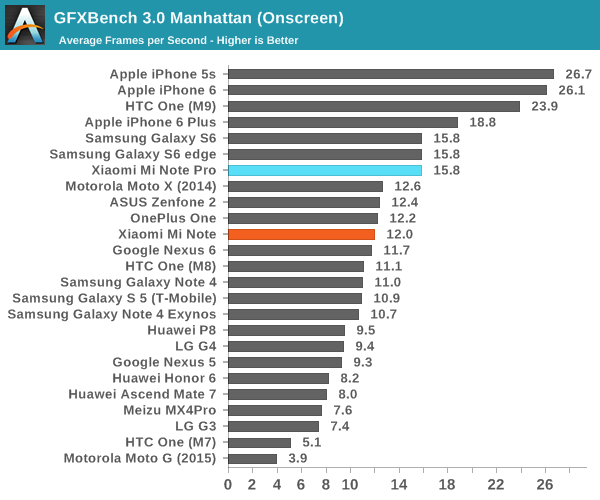
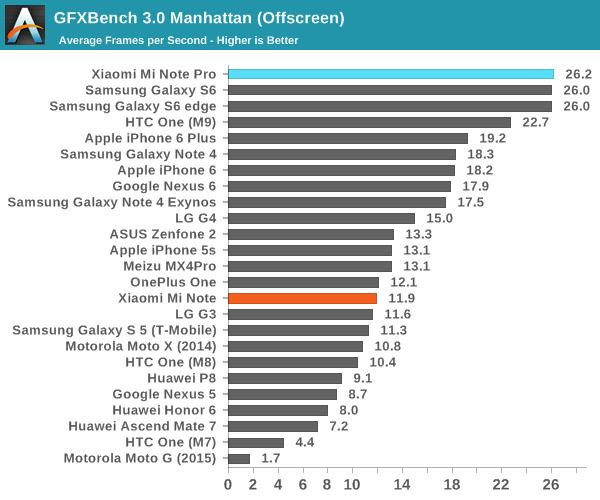
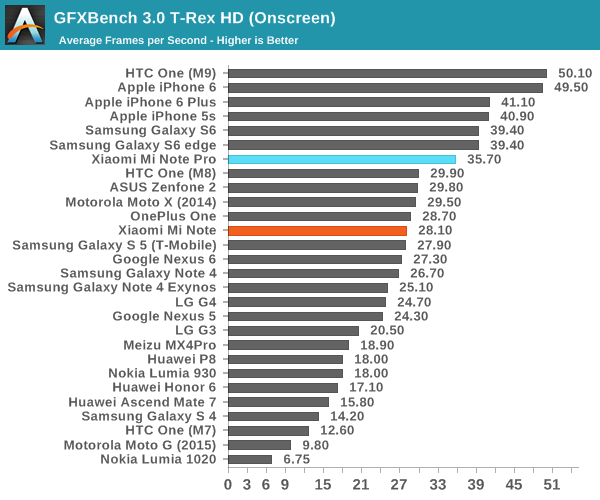
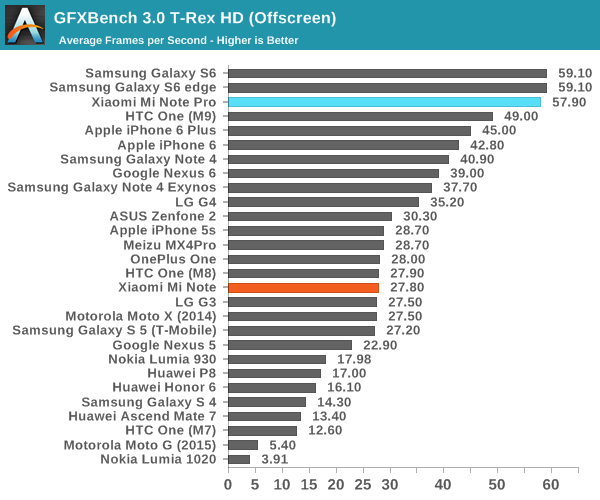
Interestingly, the GPU benchmark results show a pretty noticeable change relative to what we saw out of the One M9 at the launch of the first Snapdragon 810 phones. It's clear that some sort of driver optimization has been implemented as in every benchmark we see performance improvements well north of 5% that would be seen from purely clock speed gains. This highlights just how volatile GPU performance can be as Adreno 430 is now roughly equivalent to the T760MP8 in GFXBench and 3DMark. However, we still see the Adreno 430 lagging behind in Basemark X, which suggests the architecture of the Adreno 430 is a limiting factor in some workloads.
NAND Performance
While it’s often easy to forget about internal storage outside of capacity, it turns out that good storage performance is critical for a number of general purpose computing tasks. Mobile OSes aren’t necessarily as affected by storage performance as a desktop or laptop that is caching parts of RAM on internal storage, but even so it’s definitely possible to see the problems that result from cutting too deep here. Probably the most well-known example of this sort of cutting was the original Nexus 7 in 2012, which suffered from severe issues due to a lack of TRIM and general poor performance. In order to test mobile devices for this sort of problem, we use our standard benchmarks for testing basic read and write performance of the internal storage solution. In the case of the Xiaomi Mi Note Pro, we see a Samsung CGND3R eMMC package, while the Xiaomi Mi Note uses Toshiba’s 016GE2 eMMC solution.
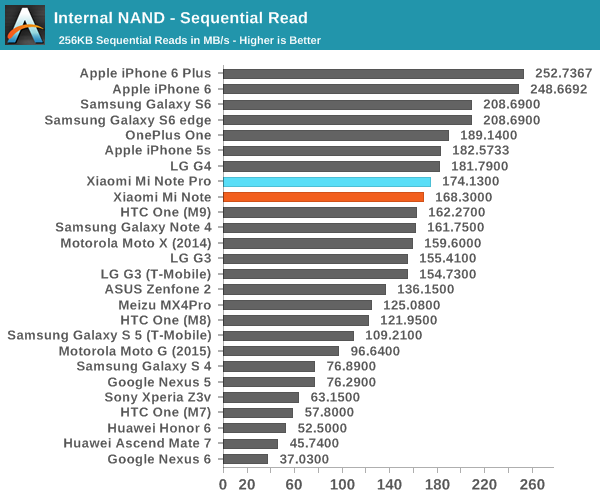
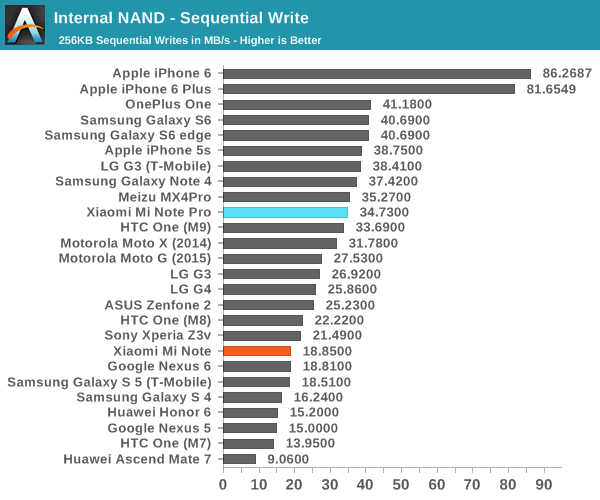
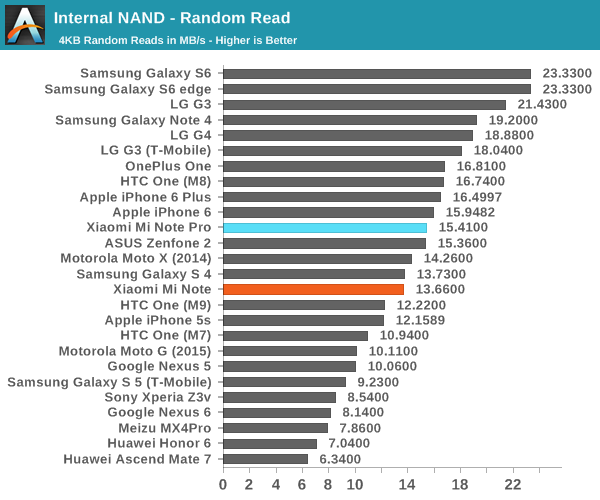
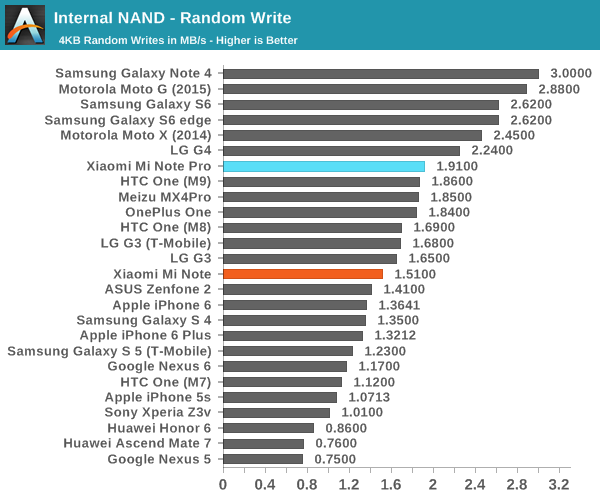
In practice, neither has incredible performance, but performance is far from poor here. For the most part, the user experience effects on storage performance will be somewhat hard to notice as sufficient storage performance means that the bottleneck for any kind of lag or stutter would be elsewhere in most applications.










94 Comments
View All Comments
DigitalFreak - Friday, September 11, 2015 - link
You guys need to say if a phone is a US model up front. I'd rather not waste my time reading a review of something that's only available in Asia/Europe.Daniel Egger - Friday, September 11, 2015 - link
I agree but for the exact opposite reason. But on the bright side the non-availability of subsidised US versions means that we we non-US readers don't have to have to look up the unsubsidised prices elsewhere to actually get a feel for the real price...Jimbo - Friday, September 11, 2015 - link
Yet your eventual cost for the very same hardware is always more, so how is that a "bright side" again?Daniel Egger - Friday, September 11, 2015 - link
I've no idea what you're trying to say. I applaud every attempt at providing comparable data: When AT reviews a laptop they'll tell you the MSRP (and street price), when they look at a phone they'll typically tell you some bullshit subsidised price which has only a meaning in the US and nowhere else in the world (and also only if you're actually looking to buying the device on contract).mkozakewich - Saturday, September 12, 2015 - link
I really wish they'd stop doing that. Because of stuff like that, I'm sure most people don't realize their phones are worth more than a few hundred dollars.duploxxx - Friday, September 11, 2015 - link
order this phone through web so available everywhere. reading something on technology is wasting time? time for you to stay in the apple store......DigitalFreak - Friday, September 11, 2015 - link
I'm the furthest thing from an Apple fan you'll find, moron. I'm not interested in buying a phone that most likely won't work on many of the US bands.You, on the other hand, should spend less time reading about technology and focus on learning the basics of the English language.
jordanclock - Friday, September 11, 2015 - link
Instead of being ass, you could just look up the available bands on a site like gsmarena. Not every product reviewed on Anandtech is going to be applicable to you. In this case, the phone does not support LTE on any US carriers but should support HSPA+ on ATT and T-Mobile.DigitalFreak - Friday, September 11, 2015 - link
As a service to their readers, all AT needs to do is add one sentence. As for the rest, when someone attacks me they get it right back.Have a wonderful day.
Vorl - Friday, September 11, 2015 - link
I agree. They very rarely review anything that isn't for consumption in the US. I would also rather not waste my time reading about something that isn't available. Yes, it's a waste. There isn't anything here that's ground breaking tech wise, so nothing to "learn". It's just a matter of how they put the package together. if isn't nothing I can use, why would I care?